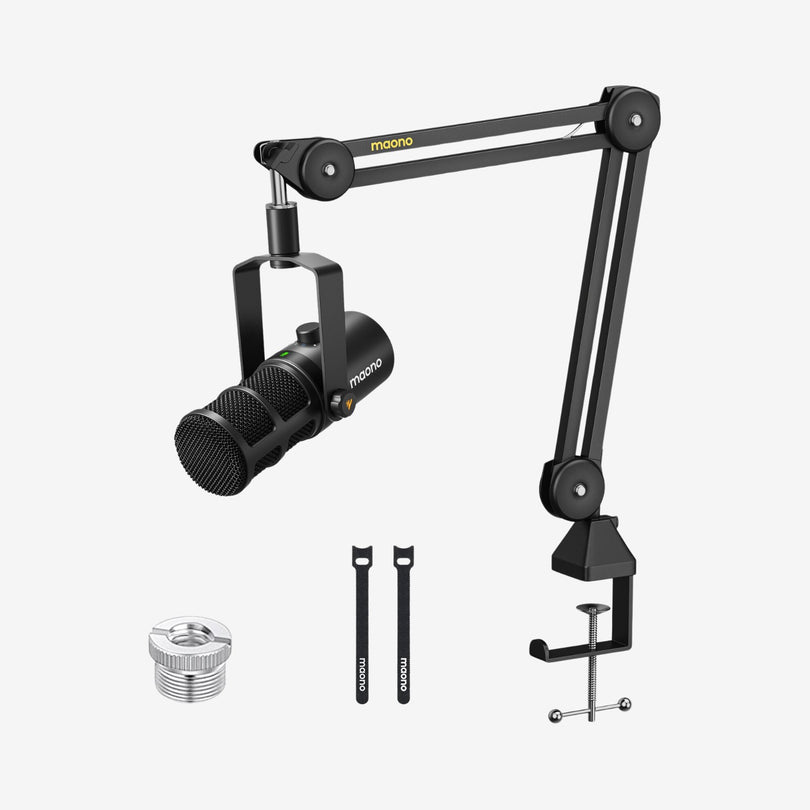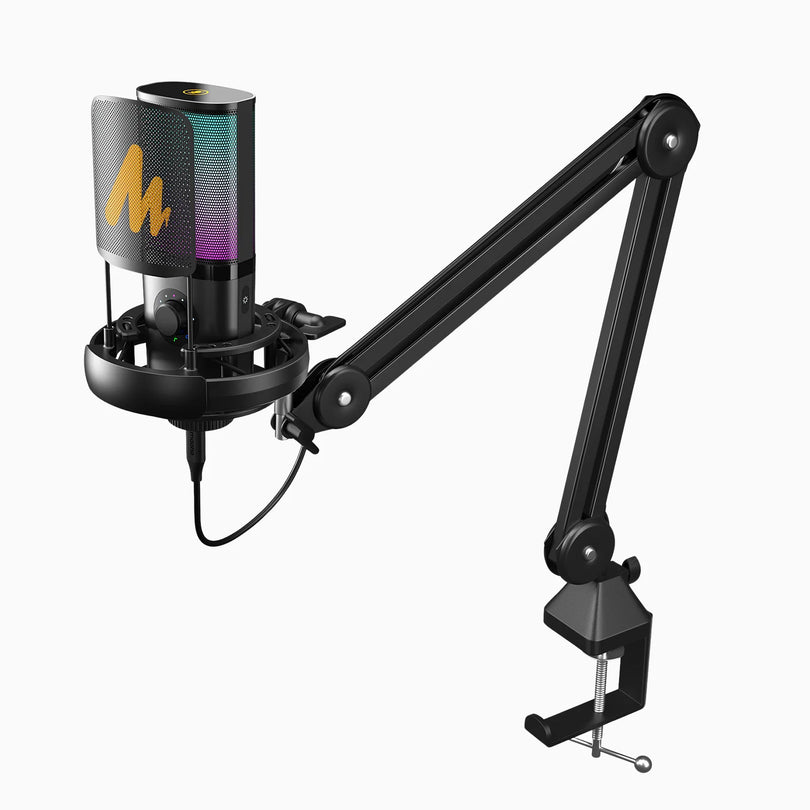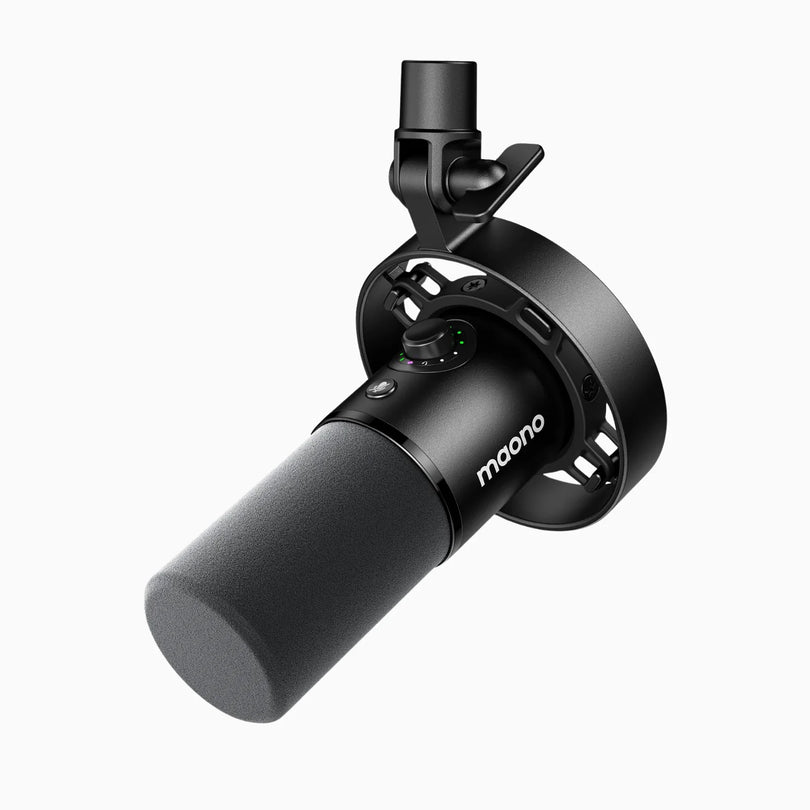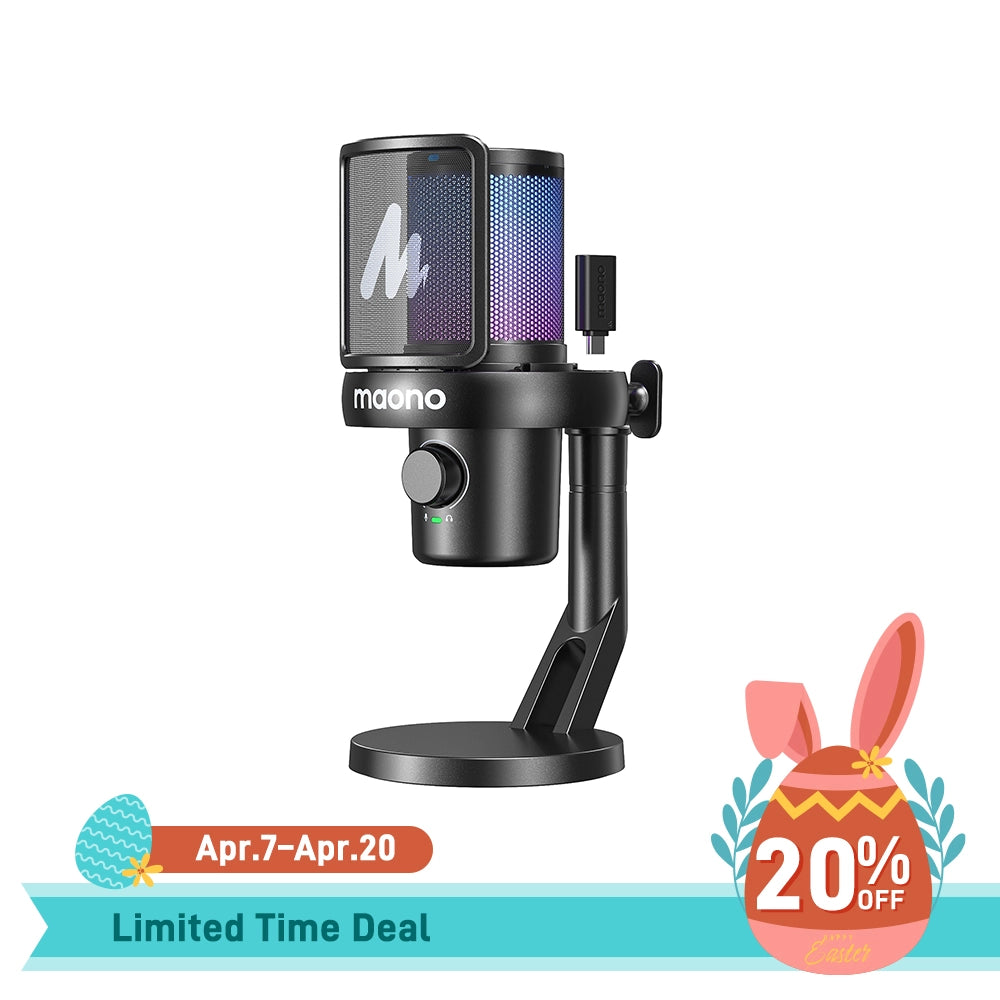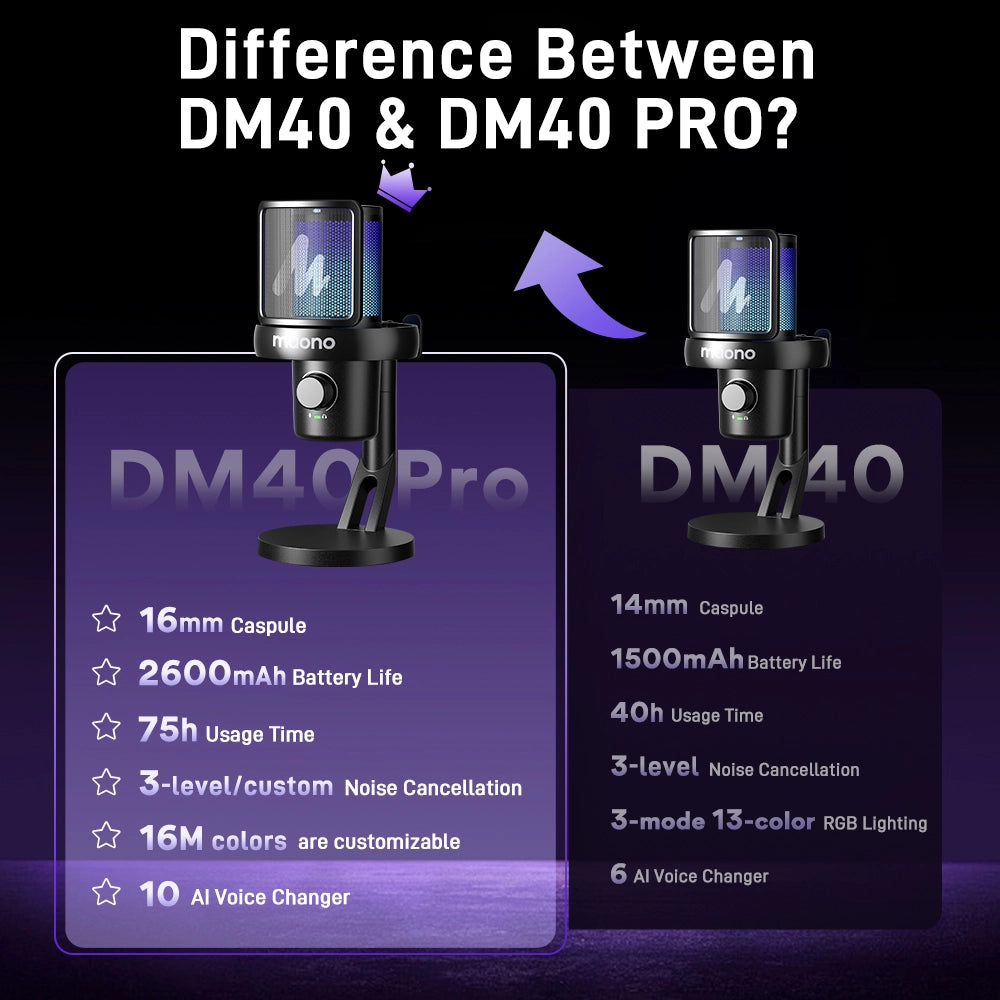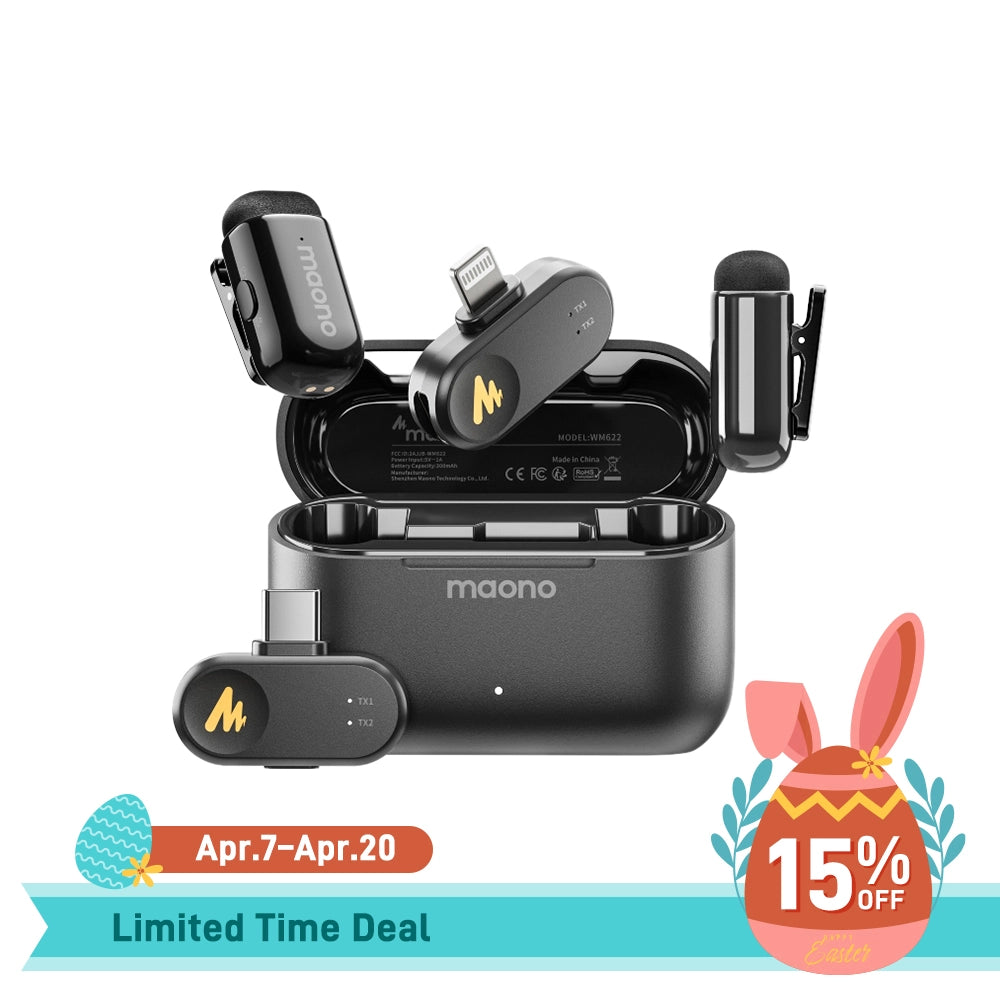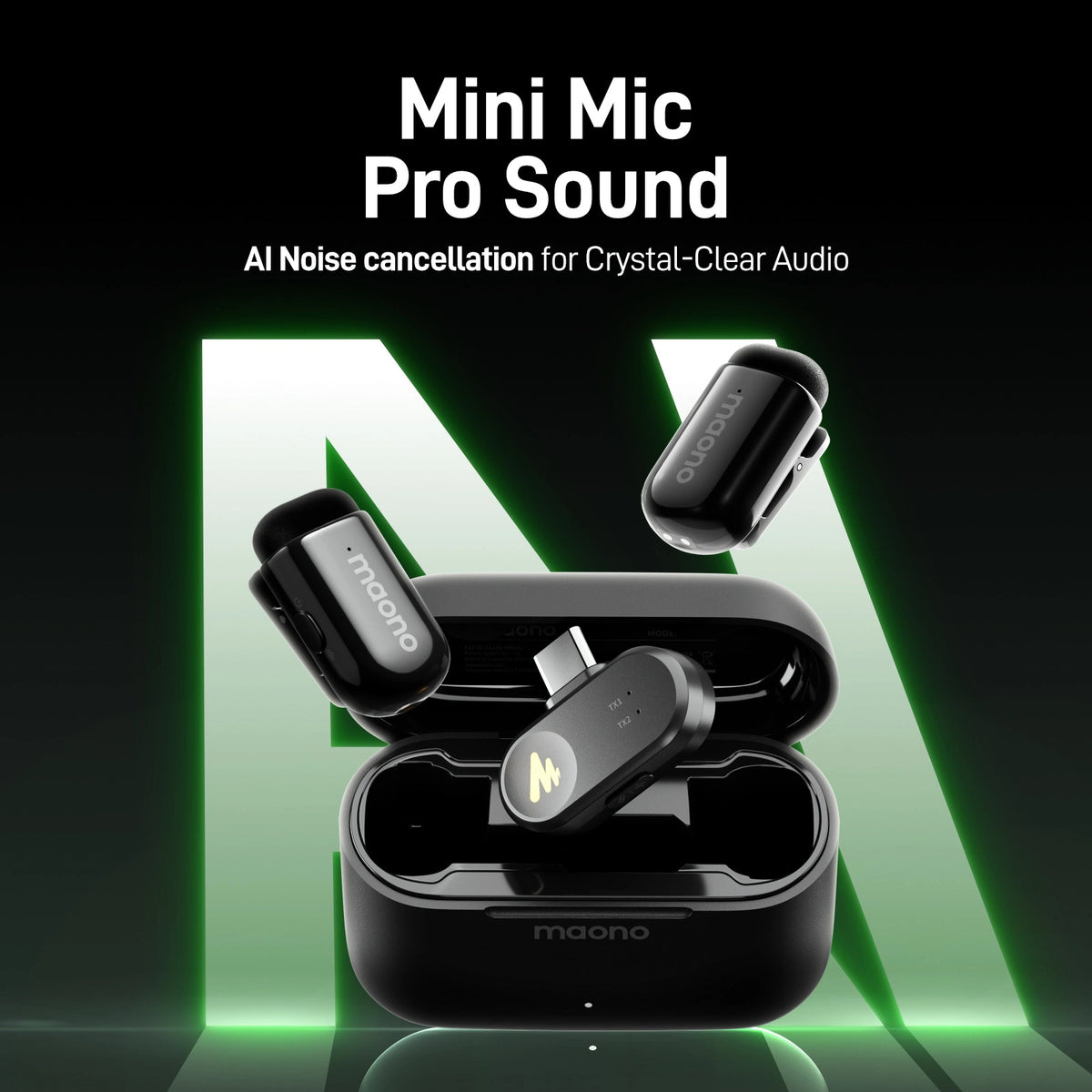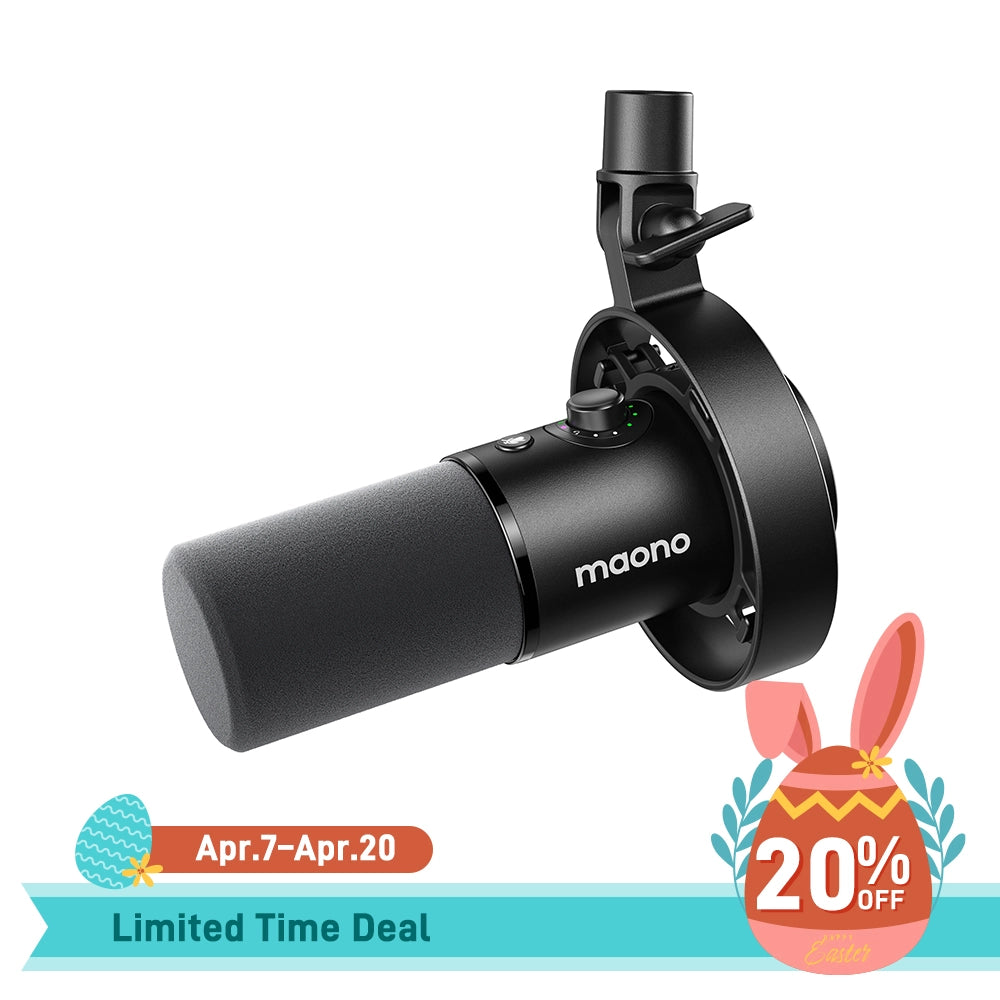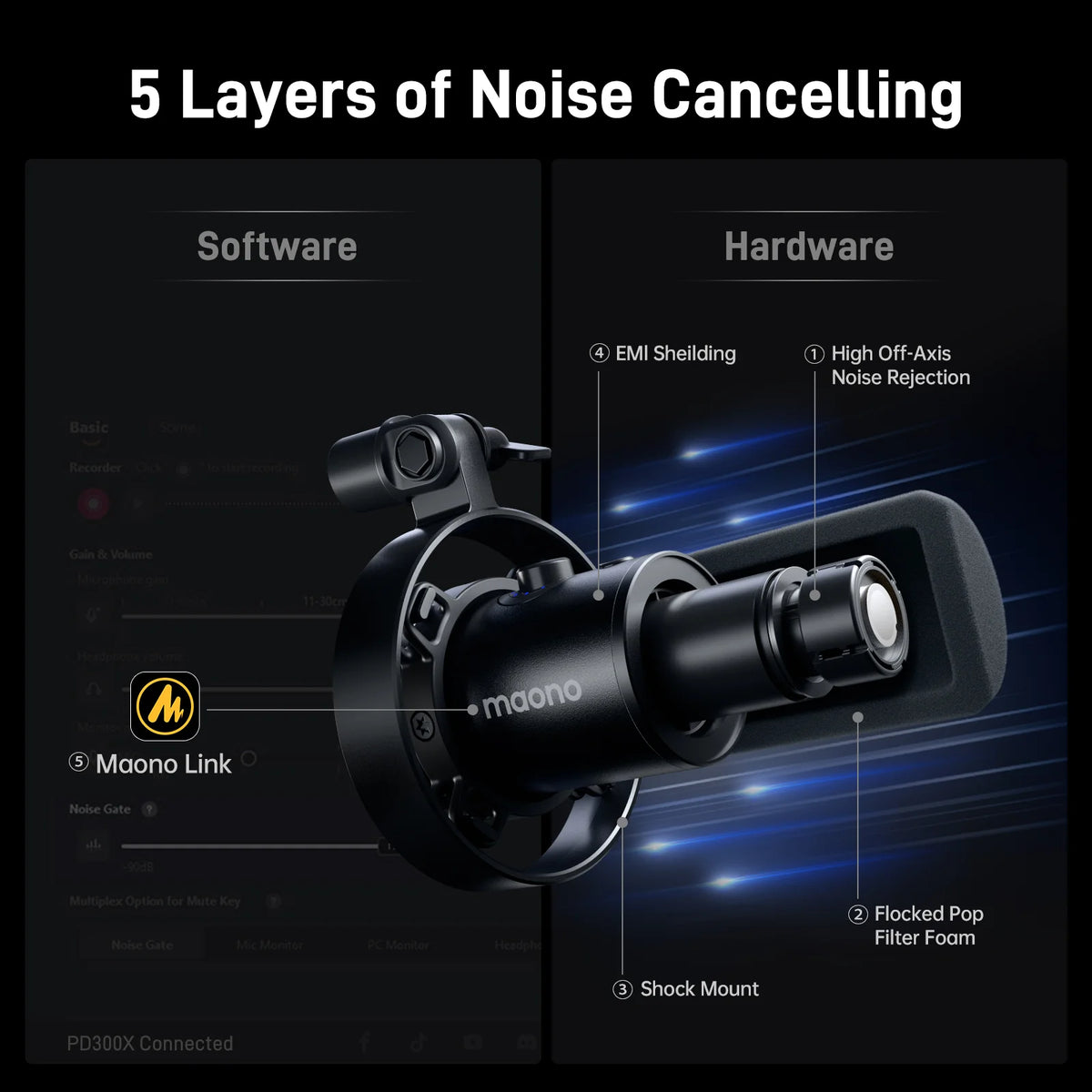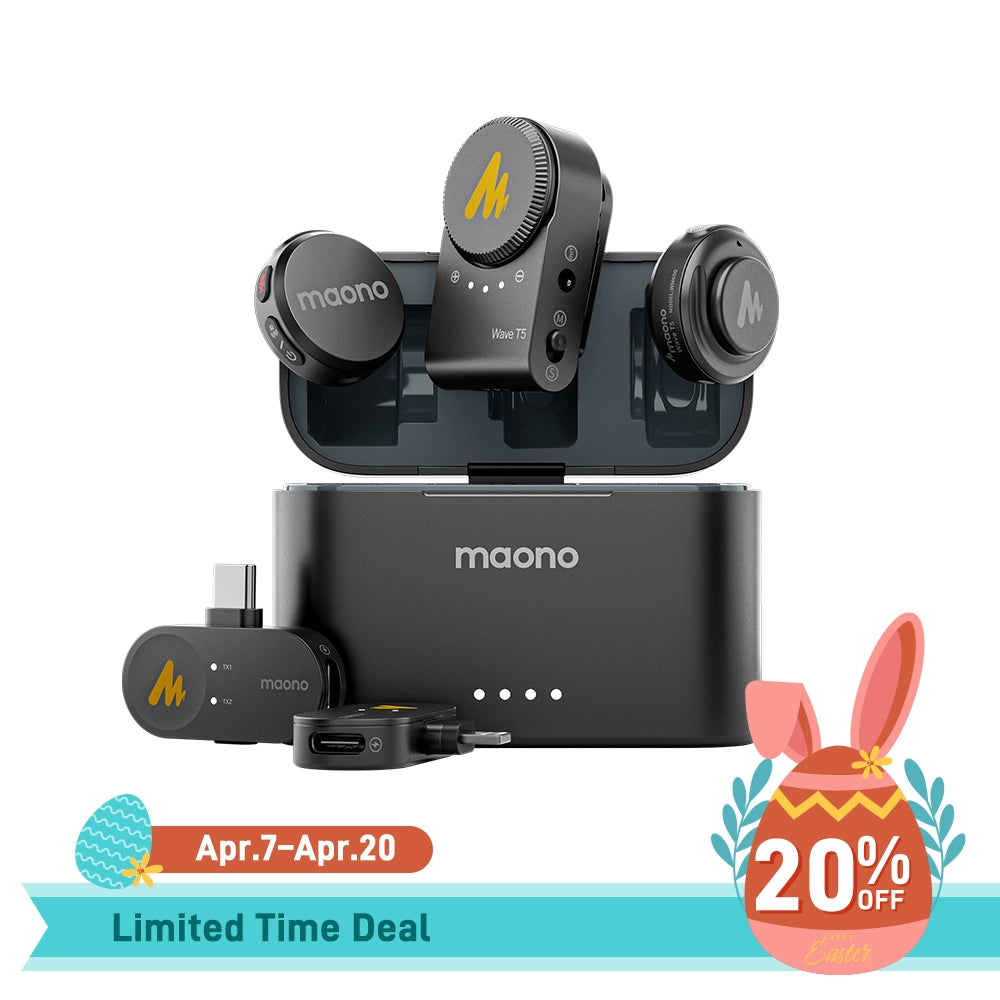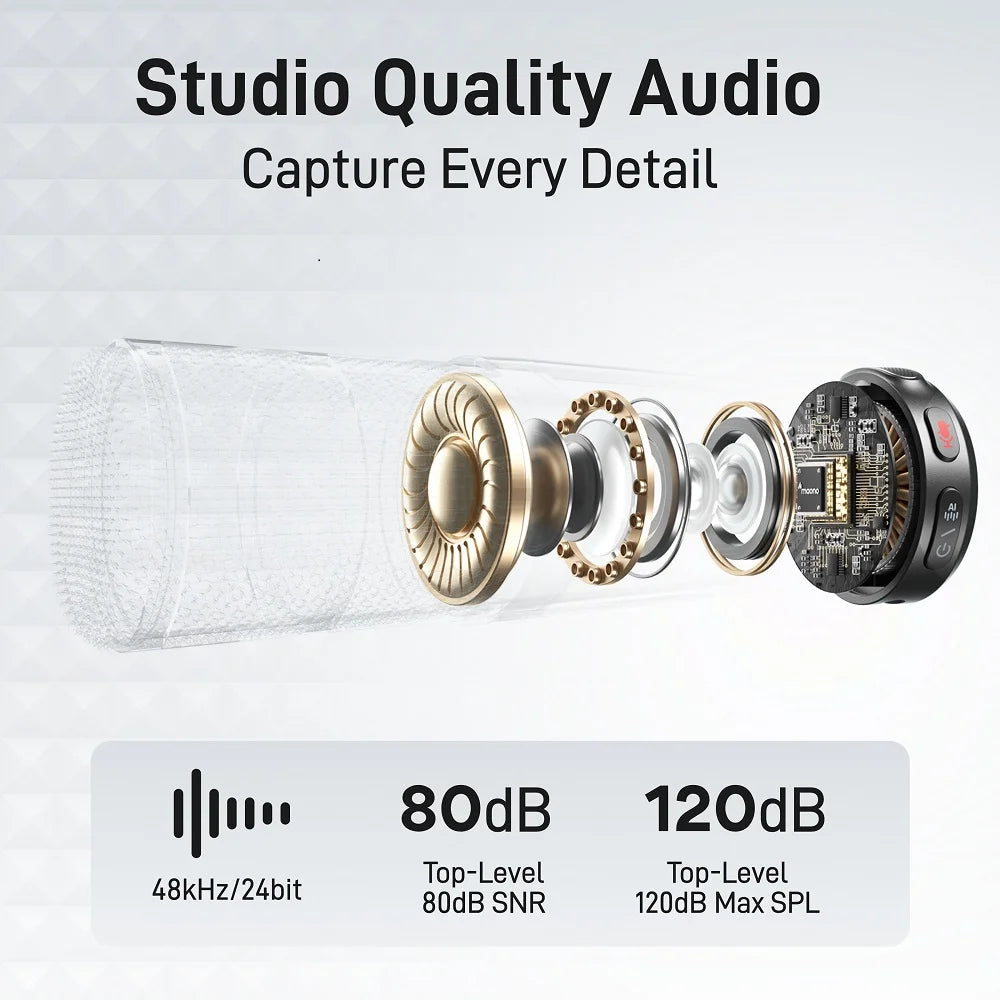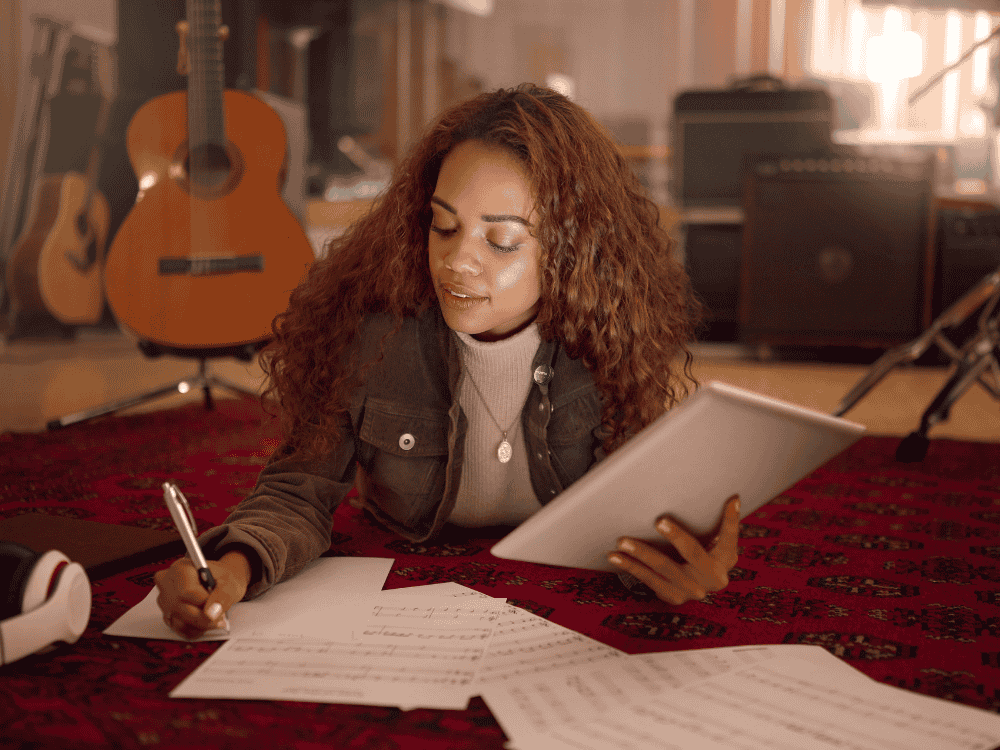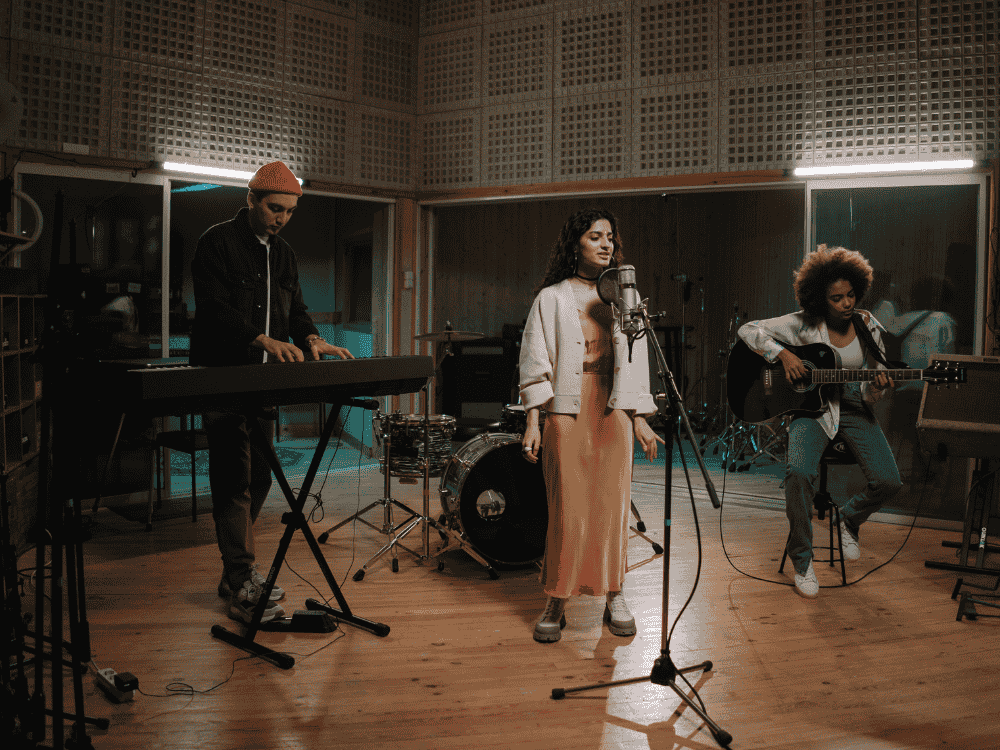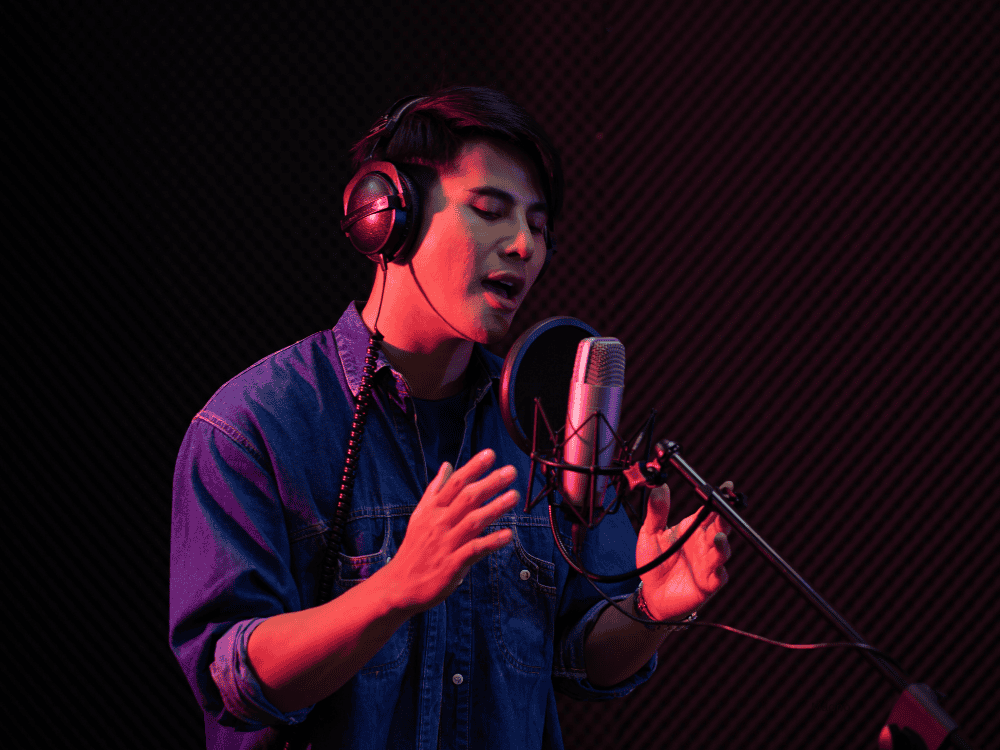Choosing the right recording microphone is crucial for capturing the best sound in music production. With various types and models available, it's essential to understand what each microphone offers to make a reasonable decision. This guide provides a comprehensive look at some of the best microphones for different budgets and applications, along with buying advice to help you select the perfect recording microphone for your music needs.
Here's our Top Picks for the Best Microphones for Recording
1. Shure SM57
2. Sennheiser e 609 Silver
3. IK Multimedia iRig Stream Mic Pro
4. Sontronics Solo Microphone
5. Maono PD400X
Musicians’ Choice: Top Picks for the Best Microphones for Recording
6.Rode NT1 5th Gen Microphone
7. Audio Technica AE2300 Microphone
8. AKG C214
9. sE Electronics sE2200a II Microphone
10. Shure MV7
11. Aston Microphones Origin
12. Maono PM500
Best Microphones for Recording $400-$800+
13. Shure SM7B
14 Electro-Voice RE20
15. Rode NTR Ribbon Microphone
16. AKG C636
17. Neumann TLM 102
Best Microphones for Recording that cost $800-$1000+
18. Slate Digital VMS
19. Audio Technica AT5040
20. Lewitt Pure Tube
21. Sontronics Aria Microphone
22. Telefunken TF11 FET
Our Top Picks for the Best Microphones for Recording
1. Shure SM57 - The Best for Guitar Cabinets with Loud Tone
Specifications
Mic Type: Dynamic
Pickup Pattern: Cardioid
Connection: XLR
Reasons to Buy
✅ Durable and reliable
✅ Excellent for loud sound sources like guitar amps and drums
✅ Affordable and versatile
Reasons to Avoid
❌ Not as detailed for vocal recordings
❌ Requires a strong preamp for optimal performance
The Shure SM57 is a workhorse dynamic microphone known for its rugged construction and reliability. Its cardioid pickup pattern focuses on the sound source while minimizing background noise, making it ideal for loud guitar cabinets and snare drums. The SM57’s ability to handle high sound pressure levels (SPL) without distortion makes it a staple in both live sound and studio environments.
2. Sennheiser e 609 Silver - The Best for Recording and Miking Guitar Cabs
Specifications
Mic Type: Dynamic
Pickup Pattern: Supercardioid
Connection: XLR
Reasons to Buy
✅ Designed specifically for guitar amps
✅ Excellent off-axis rejection
✅ Rugged and durable
Reasons to Avoid
❌ Limited to specific applications
❌ Not suitable for vocals or acoustic instruments
The Sennheiser e 609 Silver is a dynamic microphone designed for miking guitar cabinets. Its supercardioid pickup pattern ensures excellent isolation of the sound source, and its flat shape allows it to be easily placed directly in front of the amp. The e 609 Silver’s durability and ability to handle high SPLs make it a favorite among guitarists and recording engineers.
3. IK Multimedia iRig Stream Mic Pro - The Best All-purpose USB Microphone and Audio Interface
Specifications
Mic Type: Condenser
Pickup Pattern: Cardioid, Omnidirectional, Figure-8, Stereo
Connection: USB
Reasons to Buy
✅ Versatile with multiple polar patterns
✅ Easy integration with mobile devices
✅ Built-in audio interface
Reasons to Avoid
❌ Limited professional-grade sound quality
❌ May not be as durable as other options
The IK Multimedia iRig Stream Mic Pro is a versatile USB microphone that serves as both a microphone and an audio interface. It features multiple polar patterns, making it suitable for various recording scenarios. Ideal for musicians on the go, it offers easy setup and high-quality recordings directly to mobile devices or computers. Despite its convenience, it may not match the sound quality of more expensive studio microphones.
4. Sontronics Solo Microphone - The Best for Live and Studio Recordings
Specifications
Mic Type: Dynamic
Pickup Pattern: Supercardioid
Connection: XLR
Reasons to Buy
✅ High-quality build
✅ Clear and detailed sound
✅ Great alternative to Shure SM58
Reasons to Avoid
❌ Less common, so fewer accessories and replacement parts are available
❌ Higher price point compared to similar mics
The Sontronics Solo is a dynamic microphone with a supercardioid pickup pattern, offering excellent off-axis rejection and clarity. It’s designed for both live and studio use, providing a robust sound that makes it a strong competitor to the Shure SM58. The Solo’s detailed response and rugged construction make it a reliable choice for vocal and instrument recordings.

Specifications
Mic Type: Dynamic
Pickup Pattern: Cardioid
Connection: USB and XLR
Reasons to Buy
✅ Dual USB/XLR outputs for versatility
✅ Built-in touch controls
✅ Solid build quality
Reasons to Avoid
❌ Higher price point for a beginner mic
❌ Limited to cardioid pattern
The Maono PD400X is a versatile dynamic microphone that offers both USB and XLR outputs, making it suitable for a wide range of recording setups. Its cardioid pickup pattern provides excellent isolation of the sound source, making it ideal for podcasting, streaming, and studio recording. The PD400X features built-in touch controls for easy adjustments, and its solid build quality ensures durability. While it’s more expensive than basic beginner mics, its flexibility and features make it a valuable tool for serious content creators and musicians.
Musicians’ Choice: Top Picks for the Best Microphones for Recording
6. Rode NT1 5th Gen Microphone - The Best Budget-friendly Condenser Microphone
Specifications
Mic Type: Condenser
Pickup Pattern: Cardioid
Connection: XLR
Reasons to Buy
✅ Extremely low self-noise
✅ Natural and detailed sound
✅ Affordable for a condenser mic
Reasons to Avoid
❌ Requires phantom power
❌ Limited to cardioid pattern
The Rode NT1 5th Gen is a condenser microphone renowned for its incredibly low self-noise, making it ideal for capturing subtle details in vocals and acoustic instruments. Its cardioid pickup pattern provides focused recordings with minimal background noise. The NT1’s affordability and high-quality sound make it a popular choice for home studios and professional setups alike.
7. Audio Technica AE2300 Microphone - The Best in Flat Frequency Response Microphone
Specifications
Mic Type: Dynamic
Pickup Pattern: Cardioid
Connection: XLR
Reasons to Buy
✅ Flat frequency response
✅ High SPL handling
✅ Durable and versatile
Reasons to Avoid
❌ Less prominent brand recognition
❌ Limited to cardioid pattern
The Audio Technica AE2300 is a dynamic microphone offering a flat frequency response and high SPL handling, making it suitable for various recording applications. Its cardioid pickup pattern ensures focused sound capture, while its robust construction ensures durability. The AE2300 serves as a mid-priced alternative to the Shure SM57, providing similar versatility and reliability.
8. AKG C214 - Great Choice for Recording Guitar Amps
Specifications
Mic Type: Condenser
Pickup Pattern: Cardioid
Connection: XLR
Reasons to Buy
✅ Detailed and accurate sound
✅ Versatile for various applications
✅ Pad and low-cut filter
Reasons to Avoid
❌ Limited to cardioid pattern
❌ Requires phantom power
The AKG C214 is a condenser microphone offering a detailed and accurate sound, making it suitable for recording guitar amps, vocals, and other instruments. Its cardioid pickup pattern focuses on the sound source, while the built-in pad and low-cut filter provide additional versatility. The C214’s high-quality sound and robust construction make it a valuable addition to any studio.
9. sE Electronics sE2200a II Microphone - The Best Mid-Range Multi-Patterned Microphone
Specifications
Mic Typ: Condenser
Pickup Pattern: Cardioid, Omnidirectional, Figure-8
Connection: XLR
Reasons to Buy
✅ Multiple polar patterns
✅ High-quality sound
✅ Versatile for various recording situations
Reasons to Avoid
❌ More expensive than single-pattern mics
❌ Requires phantom power
The sE Electronics sE2200a II is a multi-pattern condenser microphone that offers cardioid, omnidirectional, and figure-8 polar patterns. This versatility makes it suitable for a wide range of recording situations, from vocals to instruments. Its high-quality sound and robust build make it a reliable choice for both home studios and professional settings.
10. Shure MV7 - The Best Recording USB/SLR Microphone for Content Creators
Specifications
Mic Type: Dynamic
Pickup Pattern: Cardioid
Connection: USB and XLR
Reasons to Buy
✅ Dual USB/XLR outputs
✅ Excellent for content creation
✅ Built-in touch panel for controls
Reasons to Avoid
❌ Higher price point
❌ Limited to cardioid pattern
The Shure MV7 is a dynamic microphone designed for content creators, offering both USB and XLR outputs for versatility. Its cardioid pickup pattern provides excellent isolation, and the built-in touch panel allows for easy adjustments of gain, monitoring, and more. The MV7’s robust sound and flexibility make it ideal for podcasting, streaming, and studio recording.
11. Aston Microphones Origin - The Best for Vocals and Instruments Condenser Microphone
Specifications
Mic Type: Condenser
Pickup Pattern: Cardioid
Connection: XLR
Reasons to Buy
✅ Stylish design
✅ Clear and natural sound
✅ Affordable for the quality
Reasons to Avoid
❌ Limited to cardioid pattern
❌ Requires phantom power
The Aston Origin is a condenser microphone known for its unique, stylish design and high-quality sound. Its cardioid pickup pattern ensures focused recordings with minimal background noise. The Origin’s natural and clear sound makes it suitable for vocals and various instruments, offering professional quality at an affordable price.
12. Maono PM500T

Specifications
Mic Type: Condenser
Pickup Pattern: Cardioid
Connection: XLR
Reasons to Buy
✅ Affordable for music recording
✅ 34MM Large-diaphragm gold spluttered condenser capsule
✅ Includes accessories like a tripod and pop filter
Reasons to Avoid
❌ Requires phantom power
The Maono PM500T is a professional music recording condenser microphone designed for personal studios. Its cardioid pickup pattern focuses on the sound source while reducing background noise, making it ideal for music recording, backing tracks, and instrument recording. PM500T's XLR interface can be connected to a professional sound card for high-quality sound, and it comes with practical accessories such as a desktop stand and pop filter. Although its sound may not be as good as top-level microphones, it is worth the money.
Best Microphones for Recording $400-$800+ (According to Price)
13. Shure SM7B - The Best for Recording Vocals in Untreated Rooms
Specifications
Mic Type: Dynamic
Pickup Pattern: Cardioid
Connection: XLR
Reasons to Buy
✅ Excellent for untreated rooms
✅ Smooth and warm sound
✅ Built-in air suspension shock isolation
Reasons to Avoid
❌ Requires a lot of gain
❌ Heavier and larger
The Shure SM7B is a dynamic microphone renowned for its smooth and warm sound, making it ideal for recording vocals in untreated rooms. Its cardioid pickup pattern and built-in air suspension shock isolation minimize background noise and mechanical vibrations. The SM7B’s durability and professional sound make it a favorite among broadcasters and recording engineers.
14. Electro-Voice RE20 - The Dynamic Mic/Condenser-Like
Specifications
Mic Type: Dynamic
Pickup Pattern: Cardioid
Connection: XLR
Reasons to Buy
✅ Condenser-like clarity
✅ Variable-D design minimizes the proximity effect
✅ Robust and durable
Reasons to Avoid
❌ Heavy and large
❌ Higher price for a dynamic mic
The Electro-Voice RE20 is a dynamic microphone that offers the clarity and detail of a condenser mic. Its Variable-D design minimizes the proximity effect, ensuring consistent sound quality regardless of distance from the mic. The RE20’s robust construction and versatile sound make it suitable for broadcast, vocals, and instrument recordings.
15. Rode NTR Ribbon Microphone - The Best Ribbon Mic for Recording
Specifications
Mic Type: Ribbon
Pickup Pattern: Figure-8
Connection: XLR
Reasons to Buy
✅ Smooth and warm sound
✅ Captures subtle nuances
✅ High SPL handling
Reasons to Avoid
❌ Fragile compared to dynamic and condenser mics
❌ Requires careful handling
The Rode NTR is a ribbon microphone that offers a smooth and warm sound, making it ideal for capturing the subtle nuances of instruments and vocals. Its figure-8 pickup pattern provides balanced sound capture from both sides. The NTR’s high SPL handling and vintage tone make it a valuable tool for studio recordings.
16. AKG C636 - The Best Microphone for Studio Recording
Specifications
Mic Type: Condenser
Pickup Pattern: Cardioid
Connection: XLR
Reasons to Buy
✅ Transparent and natural sound
✅ High-quality build
✅ Ideal for studio use
Reasons to Avoid
❌ Expensive
❌ Requires phantom power
The AKG C636 is a high-end condenser microphone designed for studio use, offering transparent and natural sound. Its cardioid pickup pattern provides focused recordings with minimal background noise. The C636’s robust build and detailed sound make it an excellent choice for professional vocal and instrument recordings.
17. Neumann TLM 102 Microphone - The Best Choice of Microphone for Vocalists
Specifications
Mic Type: Condenser
Pickup Pattern: Cardioid
Connection: XLR
Reasons to Buy
✅ Compact and durable
✅ Excellent vocal clarity
✅ Presence boost for vocals
Reasons to Avoid
❌ Requires phantom power
❌ Higher price point
The Neumann TLM 102 is a compact condenser microphone that delivers professional-quality vocal recordings. Its cardioid pickup pattern ensures focused sound capture, while the presence boost enhances vocal clarity. The TLM 102’s robust construction and high-quality sound make it a valuable addition to any mid-range budget studio.
Best Microphones for Recording that cost $800-$1000+
18. Slate Digital VMS - The Best Recording Microphone with a Vintage Feel
Specifications
Mic Type: Condenser
Pickup Pattern: Cardioid
Connection: XLR
Reasons to Buy
✅ Virtual modeling capabilities
✅ Versatile sound options
✅ High-quality recordings
Reasons to Avoid
❌ Requires software for full functionality
❌ Expensive
The Slate Digital VMS is a versatile microphone system that uses software to emulate various classic microphones. Its cardioid pickup pattern ensures focused sound capture, while the virtual modeling capabilities provide a wide range of sound options. The VMS’s high-quality recordings and flexibility make it ideal for studios needing multiple mic sounds without the cost.
19. Audio Technica AT5040 Microphone
Specifications
Mic Type: Condenser
Pickup Pattern: Cardioid
Connection: XLR
Reasons to Buy
✅ Exceptional clarity and detail
✅ Professional studio quality
✅ Robust construction
Reasons to Avoid
❌ Very expensive
❌ Requires phantom power
The Audio Technica AT5040 is a high-end condenser microphone that offers exceptional clarity and detail, making it perfect for professional studio use. Its cardioid pickup pattern ensures focused sound capture, while the robust construction guarantees durability. The AT5040’s pristine recordings and high-quality build make it a top choice for serious recording engineers.
20. Lewitt Pure Tube - One of the Best Tube Mics You Can Buy Today
Specifications
Mic Type: Tube Condenser
Pickup Pattern: Cardioid
Connection: XLR
Reasons to Buy
✅ Rich and warm sound
✅ High-quality build
✅ Ideal for high-fidelity recordings
Reasons to Avoid
❌ Expensive
❌ Requires phantom power and additional power supply
The Lewitt Pure Tube is a premium tube condenser microphone that delivers rich and warm recordings, making it ideal for high-fidelity studio work. Its cardioid pickup pattern ensures focused sound capture, while the high-quality build ensures durability. The Pure Tube’s exceptional sound quality makes it one of the best tube mics available today.
21. Sontronics Aria Microphone - The Excellent Valve Microphone Choice for Vocalists
Specifications
Mic Type: Valve Condenser
Pickup Pattern: Cardioid
Connection: XLR
Reasons to Buy
✅ Lush and detailed sound
✅ High-quality build
✅ Ideal for vocals
Reasons to Avoid
❌ Expensive
❌ Requires phantom power and additional power supply
The Sontronics Aria is a valve condenser microphone known for its lush and detailed sound, making it a top choice for vocal recordings. Its cardioid pickup pattern ensures focused sound capture, while the high-quality build guarantees durability. The Aria’s exceptional sound quality and vintage tone make it one of the best valve microphones available.
22. Telefunken TF11 FET - The Best Modern Microphone with Vintage C12 Tone
Specifications
Mic Type: Condenser
Pickup Pattern: Cardioid
Connection: XLR
Reasons to Buy
✅ Vintage C12 tone
✅ Modern reliability
✅ High-quality sound
Reasons to Avoid
❌ Expensive
❌ Requires phantom power
The Telefunken TF11 FET is a condenser microphone that replicates the classic C12 tone, offering a vintage sound with modern reliability. Its cardioid pickup pattern ensures focused recordings, while the high-quality build guarantees durability. The TF11’s exceptional sound quality makes it a top choice for professional studios.

Tips, Facts, and Buying Advice for Choosing the Best Microphones for Recording
- How Do Microphones Work?
Sound waves are converted into electrical impulses by microphones. Condenser microphones utilize a diaphragm and a capacitor, while dynamic microphones use a diaphragm and a coil. Ribbon microphones have a thin metal ribbon to record audio.
- What's the Difference Between Dynamic, Condenser, and Ribbon Mics?
Dynamic microphones are excellent for live sound and loud sources since they are robust and can withstand high sound pressure levels.
Condenser microphones are sensitive and precise, making them perfect for recording vocals and acoustic instruments in a studio.
Ribbon microphones produce a pleasant, smooth sound that is ideal for recording subtle details in studio environments, these are rare in the market, making them more expensive.
- How to Select the Best Microphones for Your Studio
Think about your budget, the setting in which you'll be recording, and your particular recording requirements. To determine which microphone is appropriate for your tasks, do some research on various models and listen to audio samples online.
- What are Polar Patterns?
Polar patterns simply mean the direction of sound waves. It explains the manner in which microphones capture sound from various orientations:
Cardioid: It rejects sound from the sides and back and captures it from the front.
Omnidirectional: It equally records sound coming from any angle.
Figure 8: It rejects sound from the sides and records it from the front and back.
- USB vs XLR Connectivity
USB microphones are simple to use with computers and are a great option for home recording studios.
XLR Mics are more professional grade or high-end, they are more flexible, and with superior sound quality. It requires an audio interface or mixer.
- Valve versus FET–What are these?
Valve (or tube) microphones use vacuum tubes to amplify the audio signal, offering a warm, rich, vintage sound often favored in studio recordings.
FET (Field Effect Transistor) microphones use transistors for amplification, providing a cleaner, more consistent, transparent sound with lower noise levels. These technologies are important because they influence the microphone's sound character and performance, helping engineers and musicians choose the right mic for their specific recording needs.
- How Much Should I Spend on a Recording Microphone?
The answer depends on you. The variety of mics that are accessible will depend on your budget and income. Although more expensive, higher-end microphones provide superior construction and sound fidelity. Assess your requirements and choose the best microphone within the budget.
- What Controls and Accessories Should I Look for?
Microphones come with built-in controls like one tap or click the mute button, pop filters, shock mount, boom arm, gain adjustments, and RGB lighting with LED indicator (is then trend). These controls, features, and accessories can enhance not only aesthetics but also overall flexibility, sound quality, and control during recording.
- How To Test Recording Microphones
Microphones are tested with voices, with instruments, and in a variety of room conditions. You can test various microphones and decide from your experience. You can borrow a microphone from a friend, or rent it online (It’s really up to you). This testing guarantees accurate sound reproduction and good performance in a variety of settings, according to your preference.
More FAQs
- How to Record Voice Using a Microphone on a Computer
Using an audio interface or USB connector, connect the microphone to your computer. To record your voice, use a recording software.
- How to Record Microphone and System Audio
To route system audio and microphone input together, create a virtual audio cable or use recording software that supports multi-channel recording.
- What is the Best Microphone for Recording Music with Acoustic Guitar?
The best microphone for recording music with acoustic guitar includes a large-diaphragm condenser like the AKG C214. If you have that huge budget, a small-diaphragm condenser like the Neumann KM184 can be added to your list.
- What's the Best Recording Microphone?
The best recording microphone depends on meeting your music needs and fitting within the budget. For beginners, it’s better to invest in durable microphones, that capture detailed and accurate sound with less or no latency. Choose the microphone that has noise reduction feature for less than the price. Whether it’s a USB or XLR mic is what you need–it depends on your setup. If you’re a starter you don’t want a complicated setup for your recording sessions. Select an easy-to-use mic, that you can just plug and play in your computer. But if you need multiple mics for each instrument that you will use, opt to buy an XLR microphone. Options like Maono PM461 and Maono PD400X are perfect for your music needs and they’re definitely within the budget. Price range: $43.99-$209.99. Choose a bundle--a mic with boom arm, and a headphone, for your easy setup, a starter kit for less the price--where you don’t have to break the bank.

Conclusion
Choosing the right microphone is essential for achieving high-quality recordings. Consider your specific needs, budget, and the environment you'll be recording in to find the perfect mic. With this guide, you're well-equipped to make an informed decision and enhance your music recording production.


